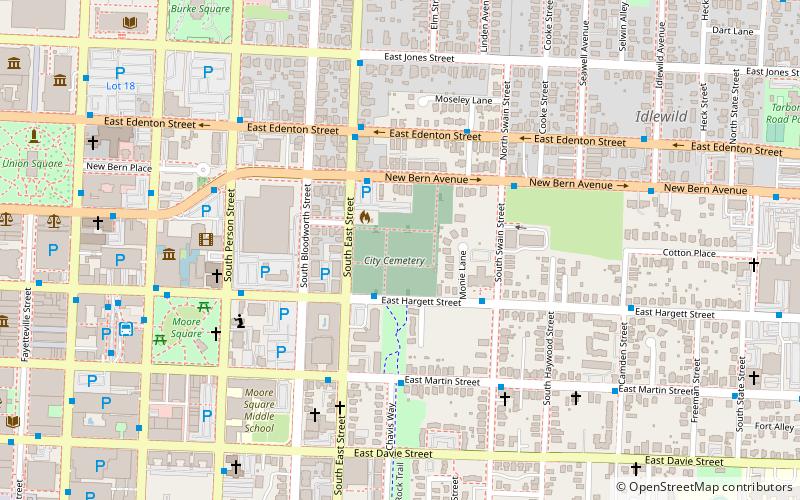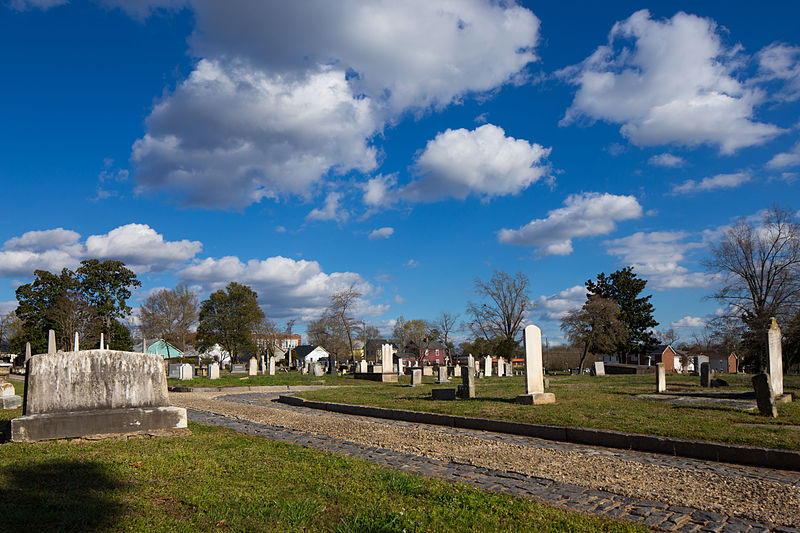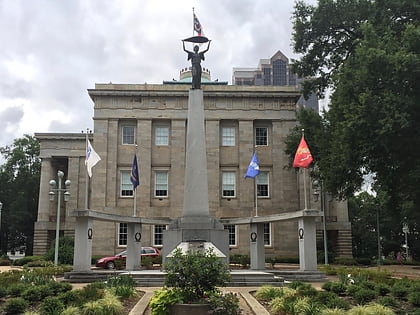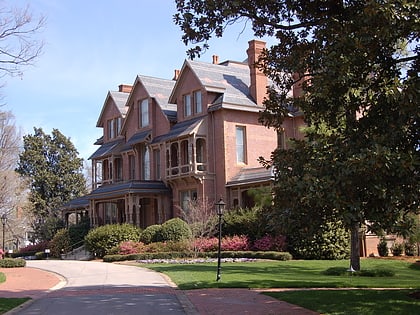City Cemetery, Raleigh


Facts and practical information
The City Cemetery of Raleigh, also known as Old City Cemetery, was authorized in 1798 by the North Carolina General Assembly as Raleigh's first burying ground. It was laid out on 4 acres of land just outside the original 1792 eastern boundary of Raleigh and bounded by East Street on the west, East Hargett Street on the south, and Morgan Street on the north. It was originally laid out in four equal quarters with the northern two quarters reserved for residents, the southwestern for visitors, and the southeastern for Negroes, both free and slaves. Over time, the cemetery has gradually been enlarged toward New Bern Street in 1819, 1849, and 1856 and now contains approximately 7.5 acres. The cemetery was enclosed in 1898 by a cast-iron fence that was formerly around Union Square to keep straying livestock out of the State Capitol grounds. A network of cobblestone driveways with granite curbstones run through the cemetery. In 1857, the city boundaries were extended to include the cemetery, and the city charter provided for a resident caretaker. Many persons of Raleigh's and North Carolina's early period are interred at City Cemetery including governors, mayors, politicians, newspaper editors, military officers, ministers, doctors, planters, attorneys, bankers, and Scottish and English stonemasons who helped build the Capitol. ()
15 S East StreetSouth Central Raleigh (Olde East Raleigh)Raleigh
City Cemetery – popular in the area (distance from the attraction)
Nearby attractions include: North Carolina Museum of History, North Carolina State Capitol, City Market, Wells Fargo Capitol Center.
Frequently Asked Questions (FAQ)
Which popular attractions are close to City Cemetery?
How to get to City Cemetery by public transport?
Bus
- E Hargett St at S East St • Lines: 17, 18, 18S (2 min walk)
- New Bern Ave at S East St • Lines: 15 (3 min walk)
Train
- Raleigh (24 min walk)











